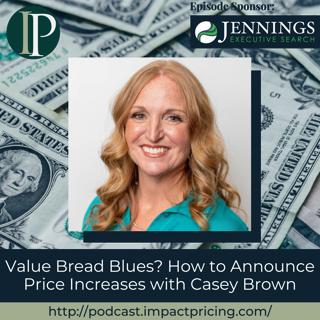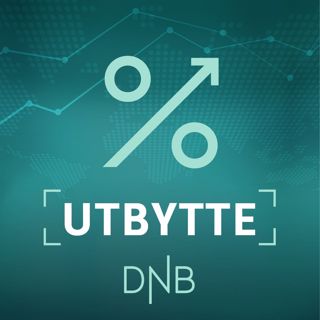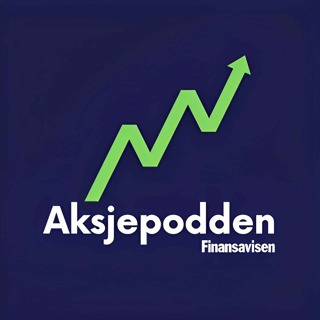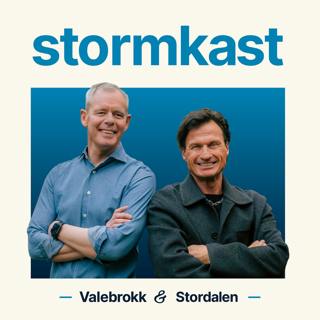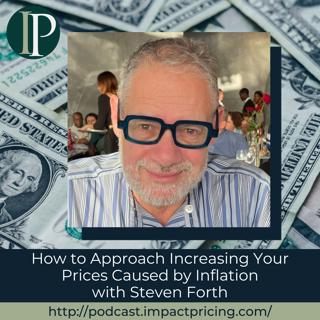
How to Approach Increasing Your Prices Caused by Inflation with Steven Forth
Steven Forth is a Partner in Ibbaka, a strategic pricing advisory firm. He was CEO of LeveragePoint Innovations Inc., a SaaS business designed to help companies create and capture value. Steven is what I consider one of the great pricing thinkers in our industry. In this episode, Steven shares Ibbaka’s approach on raising prices, especially during inflation, as he discusses what’s expected to happen in the pricing world next year, given all the events that’s been around this 2022. Why you have to check out today’s podcast: Find out why you should first segment your customers and treat them differently before you raise your prices; Learn how to approach a price increase, especially during inflation; and Discover what’s possible to happen in the pricing world in 2023, especially with concerns of inflation and recession around “Learn how to build value models, and connect them to prices.” – Steven Forth Topics Covered: 01:18 – Steven’s perspective on whether people should be thinking about raising prices now, along with questions to ask before you do so 04:59 – What Mark teaches his clients vs. Ibbaka’s approach in raising prices 09:31 – Discussion around an inaccurate representation of inflation, especially in SaaS 12:40 – “Pricing is a game that plays out over time, and you always want to make sure you’re thinking three to five moves ahead. If you don’t, you’re going to hurt yourself.” 16:16 – Taking a look at (1) the people you sell to, (2) how recession affects prices, and (3) the finance industry 20:53 – What’s happening right now? What is going to be different in 2023? 26:43 – Steven’s pricing advice Key Takeaways: “There may be opportunities to raise prices, but it needs to be surgical, not broad brush. And before one raises prices, one has to ask a series of questions, beginning with what is inflation doing to my customers? And is inflation making my offer more valuable to my customers? Because if it is, then you have a great reason to raise prices. But if my customers are getting in trouble and are becoming more cost conscious because of inflation, then broad brush price increases can backfire.” – Steven Forth “I think the first thing you do before you raise prices is segment your customers and treat them differently.” – Steven Forth “Pricing is a game that plays out over time, and you always want to make sure you're thinking three to five moves ahead. And if you don't, you're going to hurt yourself.” – Steven Forth “When we hear the word inflation, we're thinking mostly about the CPI. The CPI is not what is most relevant to business. And you have to look at how inflation is impacting your customers and even your customers’ customers in order to make the right pricing.” – Steven Forth “If you don't have a data model that you can apply A.I. to, you are going to lose.” – Steven Forth People / Resources Mentioned: Ibbaka: https://www.ibbaka.com/ Connect with Steven Forth: LinkedIn: https://www.linkedin.com/in/stevenforth/ Email: steven@ibbaka.com Connect with Mark Stiving: LinkedIn: https://www.linkedin.com/in/stiving/ Email: mailto:mark@impactpricing.com
26 Des 202229min

Blogcast: An E-Commerce Price Segmentation
This is an Impact Pricing Blog published on November 16, 2022, turned into an audio podcast so you can listen on the go. Read Full Article Here: https://impactpricing.com/blog/an-e-commerce-price-segmentation/ If you have any feedback, definitely send it. You can reach us at mark@impactpricing.com. Now, go make an impact. Connect with Mark Stiving: Email: mark@impactpricing.com LinkedIn: https://www.linkedin.com/in/stiving/
23 Des 20222min
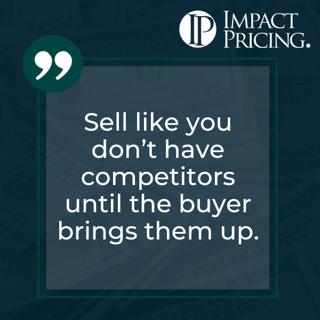
Pricing Table Topics: Jack of Diamonds - Sell Like You Don’t Have Competitors
This one is the Jack of Diamonds from the Selling Value card deck. It's true, you need to sell like you don't have competitors. Every once in a while, you find yourself in a situation where people aren't looking at your competitive alternative, and you don't want to bring it up to them. You may recall at this point in time that they're making a 'will I' decision, remember the 'will I' versus 'which one', and when people are making the 'will I' decision, 'Am I going to buy something in this product category?', they're not price sensitive. And so, it just makes sense for us to not talk about our competition because if they say yes to us and never consider a competitive alternative, they're not going to negotiate as hard on price. They're simply looking at what's the inherent value of solving the problem, not what's the value of your product relative to a competitor's product. So, it just makes all the sense in the world to not even mention a competitor until the buyer has already brought them up. We hope you enjoy this example of Pricing Table Topics. If you want to get better at speaking, especially about pricing and value, grab a deck of our cards, pull a random card and read the saying, talk for one to two minutes about what that card says. And if you have any questions or feedback, please email me, mark@impactpricing.com. Now, go make an impact. Connect with Mark Stiving: Email: mark@impactpricing.com LinkedIn: https://www.linkedin.com/in/stiving/
21 Des 20221min
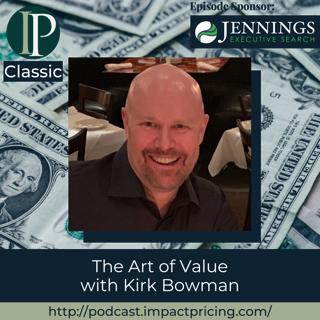
#CLASSIC The Art of Value with Kirk Bowman
Kirk Bowman is the founder and Visionary of Value and the Art of Value, a pricing consultancy in Dallas, TX. His podcast, the Art of Value Show, is one of the most shows for knowledge professionals. He has spoken at numeration conferences on pricing including QuickBooks Connect and Scaling New Heights. In 2011, he was appointed a Practicing Fellow at the VeraSage Institute, the think tank founded by Ron Baker. His software company, MightyData, was featured in the book Implementing Value Pricing. In this episode, Kirk talks about value pricing, how he was introduced to it and later switched to this method in estimating and billing customers. Be inspired as he shares how this decision increased his revenue by over 50% in the first year and 70% in the second. Learn this and more in his journey on value pricing. Why you have to check out today’s podcast: Find out how Kirk learned about the concept of value pricing Identify the two categories in measuring results Find out details about Kirk’s pricing consultancy company and his podcast “The next time the customer asks for a lower price, turn around and ask them what value they are willing to do without in order to get that price.”– Kirk Bowman Topics Covered: 01:36 – How Kirk discovered value pricing 03:40 – The concept of value pricing and how it aligns the interests of the professional with his customer 07:13 – Two categories in measuring value: results or outcomes, and how the two differ 12:11 – Sharing the profile of his pricing consultancy company – Art of Value and how it is helping professionals with their business models 14:32 – His podcast – Art of Value and the reason he loves doing it 19:37 – His pricing advice that has a significant impact Key Takeaways: “The customer’s interests are the most important thing. When you align with that, you’re lining things up for success.” – Kirk Bowman “It’s so important to put alignment upfront as one of the things that you’re striving for and keep your eye on at all times because it is in our human nature to focus on our own self-interest and so the focus on theirs, it requires intentionality. It requires strong character.” – Kirk Bowman “Value and pricing are subjective, and by the way, that’s okay.” – Kirk Bowman Connect with Kirk Bowman: LinkedIn: https://www.linkedin.com/in/kirkbowman/ Website: https://artofvalue.com/ Connect with Mark Stiving: LinkedIn: https://www.linkedin.com/in/stiving/ Email: mailto:mark@impactpricing.com
19 Des 202221min

Blogcast: What Selling Value Means
This is an Impact Pricing Blog published on November 9, 2022, turned into an audio podcast so you can listen on the go. Read Full Article Here: https://impactpricing.com/blog/what-selling-value-means/ If you have any feedback, definitely send it. You can reach us at mark@impactpricing.com. Now, go make an impact. Connect with Mark Stiving: Email: mark@impactpricing.com LinkedIn: https://www.linkedin.com/in/stiving/
16 Des 20222min
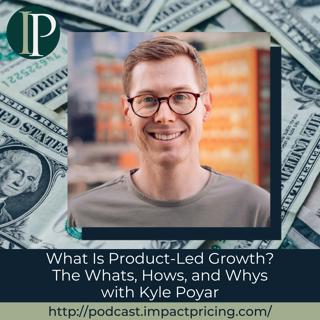
What Is Product-Led Growth? The Whats, Hows, and Whys with Kyle Poyar
Kyle Poyar is a product-led growth expert who worked for Simon-Kucher & Partners for six years where he was a consultant, senior consultant and manager, and director. Currently, he is the operating partner of OpenView, a firm that helps build software companies into market leaders by helping them hire the best talents, acquire and retrain the right customers, and partner with industry leaders so that they can dominate their markets. In this episode, Kyle talks us through the details of product-led growth and how it became popular in the recent years. He also shares some tips on how to make it work on businesses in certain industries. Why you have to check out today’s podcast: Learn the definition of Product-Led Growth Find out if Product-Led Growth model is suitable for your business Learn how to shift from Sales-led model to Product-led model “With the reverse trial, your customers land in a premium version of your product, have a time-limited period that they can access it, and then they can either convert and essentially purchase, or they can keep using a free version of the product. What ends up happening is you get the best of both worlds between freemium and free trial, and so you don't actually have to choose between the two” – Kyle Poyar Topics Covered: 01:17 – How Kyle got into pricing 03:04 – More than just about numbers pricing has qualitative aspects as well 04:12 – What is product-led growth? 06:50 – Product-led growth is more than just prioritizing product over sales and marketing people 08:17 – Most companies strategized product-led growth from scratch until it was standardized 10:04 – Can companies do freemium that is not product-led growth? 11:47 – When product-led companies bring salespeople into the process 14:49 – Salespeople in product-led companies are not prospecting 15:28 – Self-serve sales work most of the time, but some transactions require salespeople 18:40 – The types of companies that does and doesn’t work for product-led growth 22:26 – How Kyle would coach a sales-led company who wants to shift to product-led growth model 25:50 – Does it make sense for PLG companies to spend more on the expand side of “land and expand”? 27:07 – Kyle’ pricing advice 28:33 – Connect with Kyle Key Takeaways: “In my mind, why product-led growth has taken off is because end users, as opposed to just executive buyers, have more and more power in bringing software into work. And so, you can actually make your product discovered by those users, show value to those folks and enable them to become champions in your buying process” – Kyle Poyar “Freemium is a subset of PLG. If you're doing freemium by default, you're taking steps into product led growth. But freemium isn't required to be a product-led company by any means.” – Kyle Poyar “I advise companies to think in terms of where there's the most friction in their current motion and what are product-led solutions that can help solve that friction and improve upon a KPI that we want to improve on right now, and that takes us on this path to doing more PLG in the future.” – Kyle Poyar Connect with Kyle Poyar: LinkedIn: https://www.linkedin.com/in/kyle-poyar/ Connect with Mark Stiving: LinkedIn: https://www.linkedin.com/in/stiving/ Email: mailto:mark@impactpricing.com
12 Des 202229min

Blogcast #84: A Fabulous New Behavioral Economics Trick
This is an Impact Pricing Blog published on November 2, 2022, turned into an audio podcast so you can listen on the go. Read Full Article Here: https://impactpricing.com/blog/a-fabulous-new-behavioral-economics-trick/ If you have any feedback, definitely send it. You can reach us at mark@impactpricing.com. Now, go make an impact. Connect with Mark Stiving: Email: mark@impactpricing.com LinkedIn: https://www.linkedin.com/in/stiving/
9 Des 20223min
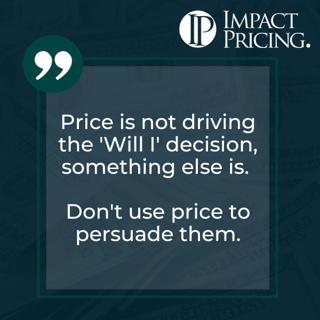
Pricing Table Topics #86: Jack of Clubs: Price Is Not Driving the 'Will I' Decision
This one is the Jack of Clubs from the Selling Value card deck. It's true, price doesn't drive the 'will I' decision. When people are making a 'will I' decision they're trying to decide, is this a place where I should spend my resources? And although you can imagine if I make a huge change in price, I could get somebody to change their mind in terms of, will they buy in this product category or not. But most of the time that's not what's driving the decision. For example, are you in the market to buy a new car today? I'm guessing the answer is no. But what if you have an accident and your car is totaled? Well, all of a sudden, you're in the market for a new car. And it isn't the price. If we lowered the price, we raised the price, that wasn't driving your decision. It was the fact that the need came up. You realized the need, and it was a really important problem. Are you in the market to buy a new refrigerator? Probably not. What if your refrigerator breaks down? Almost everything we can go through this same example where you're not in the market to go buy something, until of course something happens to prompt you to say, hey, I'd really like one of those, and then you can go shopping for which one you want to go buy. But in the beginning, it's not the price. And so small changes in price really don't change anybody's mind in terms of, am I going to go buy something in this product category? We hope you enjoyed this example of Pricing Table Topics. If you want to get better at speaking, especially about pricing and value, grab a deck of our cards, pull a random card and read the saying, then talk for one to two minutes about what the card says. If you have any questions or feedback, please email me, mark@impactpricing.com. Now, go make an impact. Connect with Mark Stiving: Email: mark@impactpricing.com LinkedIn: https://www.linkedin.com/in/stiving/
7 Des 20222min
